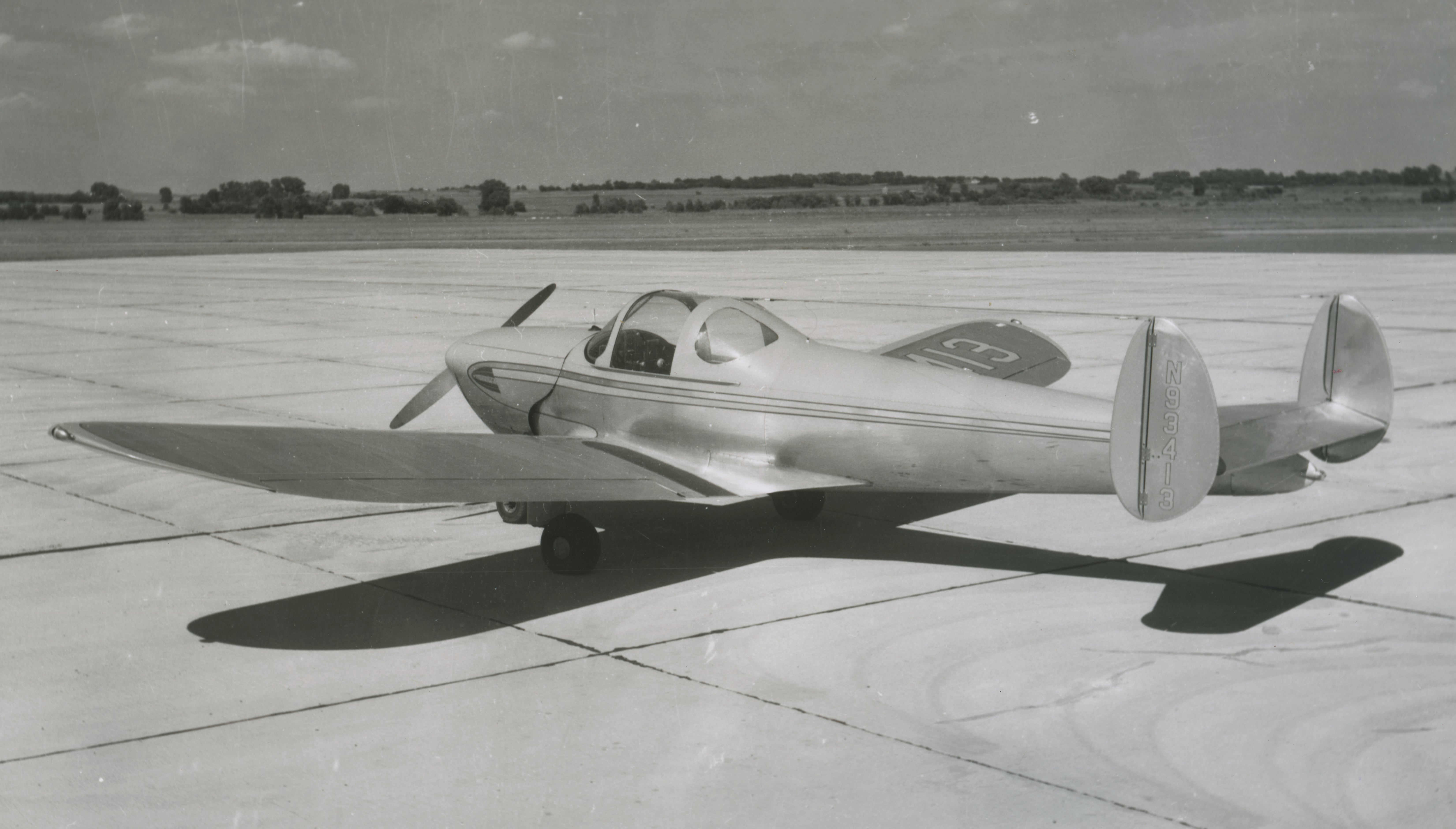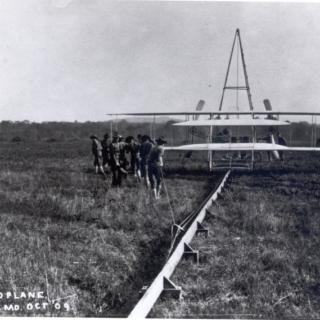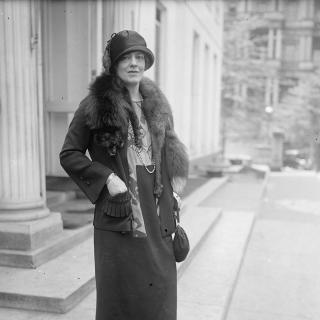A Plane for Every Garage
In the early days of aviation, aircraft designers and manufacturers envisioned a future in which everyone would have the opportunity to own and operate their own planes. One of the pioneers of this movement was Henry Berliner.
Berliner was skilled in the concepts of aircraft design, and he earned a solid reputation in the industry in the 1920s. Together with his father Emile, Berliner had revolutionized helicopter design to create more powerful and maneuverable craft.[1]
Berliner struck out on his own in 1930 and founded the Engineering and Research Corporation (ERCO). Headquartered in northwest Washington, D.C., the company’s intent was to build tools for the manufacture of airplanes. Berliner’s real dream, though, was to make air travel accessible to the masses.
Berliner’s dream was shared by aeronautical engineer Fred Weick. Weick was dedicated to advancing civic aviation, and he was already doing design work on small planes for the National Advisory Committee for Aeronautics.[2] Believing that he could make greater strides in his work in the private sector, Weick left NACA in 1936 and joined ERCO.
In 1937, Berliner purchased 50 acres of land near the airport in College Park, Maryland.[3] A large factory and an airstrip were built to manufacture and test ERCO’s new plane, the Ercoupe.
The Ercoupe was based largely on Weick’s design for a small, highly maneuverable lightweight aircraft. What made the design for the Ercoupe unique was that it relied on only two control mechanisms instead of three. “The rudder was linked to the ailerons, with the stick or wheel activating both,” writes Joseph Corn, professor at Stanford University. “Thus the rudder pedals were gone. To turn the Ercoupe or other two-control plane, the pilot simply turned his steering wheel like a car.”[4]
The Ercoupe was successfully tested in 1937 and went into production the next year. The simple steering system, the triangular landing gear, and its supposedly spin-proof design made the plane the model of aviation accessibility Berliner and Weick always imagined.
The Ercoupe 415 went on sale in 1940, and 112 units were snapped up right away by eager consumers. Unfortunately, the onset of World War II put plans for a civilian airline industry on hold as all industrial capacity was converted to serve the war effort. After World War II ended, ERCO went back to work building its Ercoupe.
The general euphoria of victory that swept America in the latter half of 1945 let people believe that anything was possible, even if that meant owning your own airplane. Macy’s department store in New York added a showroom called the Flight Deck, which featured an Ercoupe. Corn writes, “Quite matter of factly Macy’s elevator operators as they stopped on the fifth floor, chimed out, ‘ladies’ girdles, gentlemen’s socks, airplanes, and household appliances.’”[5]
The airplane craze was in full swing by the beginning of 1946. Ads appeared in magazines for Skycars, Airphibians, and Aerocars. There were even plans for a chain of airstrip/filler stations similar to gas stations for automobiles.[6] And ERCO was leading the way. The company took orders for 6,000 Ercoupes, and its factory near College Park was producing 34 planes a day.
By late 1946, the luster of personal air travel started to fade. A brief recession caused by the conversion from a military to an civilian economy following World War II depressed sales for the planes. The Ercoupe was priced economically by contemporary standards, but it was still considered a high-end luxury purchase when compared to a household appliance or even an automobile.
Professional pilots also bemoaned the so-called ease of flying small personal planes. Even with the Ercoupe’s ease of operation, there were incidents that could take place in the air with which only a skilled pilot could deal. Their concerted effort to dissuade inexperienced civilians from taking to the air left an indelible impression on consumers.
Berliner sold his rights to the Ercoupe in 1947, and left the aviation industry for good. ERCO switched its business model and began producing aircraft simulators shortly thereafter. The company was acquired by ACF Industries in 1954.
Only a little over 5,000 Ercoupes were built, and close to 2,000 exist today, with half that number registered to fly. As for the dream of cheap, personal air travel, that remains to be fulfilled.
Footnotes
- ^ For more information on the work of Emile Berliner and Henry Berliner, see this page at the Smithsonian Air and Space Museum website: http://airandspace.si.edu/collections/artifact.cfm?id=A19240006000
- ^ The National Advisory Committee for Aeronautics (NACA) later became NASA. http://history.nasa.gov/naca/
- ^ The College Park Airport, located ten miles from Washington, D.C., is billed as the world’s oldest continuously operating airport. http://www.collegeparkaviationmuseum.com/home.htm
- ^ Joseph Corn, “The Winged Gospel: America’s Romance with Aviation,” Johns Hopkins University Press, Baltimore, 2002, p. 97.
- ^ Corn, “The Winged Gospel: America’s Romance with Aviation,” p. 110.
- ^ See Paul Glenshaw, “Buy Your Plane at Penney’s,” Air & Space Magazine, November 2013: http://www.airspacemag.com/history-of-flight/buy-your-plane-at-penneys-…






![Sketch of the mythical fuan by Pearson Scott Foresman. [Source: Wikipedia]](/sites/default/files/styles/crop_320x320/public/2023-10/Goatman_Wikipedia_Faun_2_%28PSF%29.png?h=64a074ff&itok=C9Qh-PE1)












